Hey, readers! We hope you had a fabulous Memorial Day Weekend!
We’d now like to introduce you to Laura… Laura Jane Swytak is a live event painter based in Santa Ana, California. “A what…?” you may ask? That’s right! With her extensive educational and travel experiences, she offers something quite unique to the greater Los Angeles community. Laura can masterfully compose a painting of your wedding day for you to treasure for the rest of your life. More than capture details, she evokes fond memories and heartfelt emotions with her artwork. It’s a memento you will truly hold dear to. Read on as Nira meets up with Laura at none other than Vibiana to give you insight into this creative soul.

[Nira] Tell us about your background in painting.
[Laura] I started out attending the Los Angeles High School for the arts back in the 90’s and fell in love with painting. I went on to study on the east coast at the Maryland Institute College of Art, where the tradition of painting is alive and well. In the year following my BFA, I went to Madrid to study the Spanish realists and copied some of Ribera and Sorolla’s works in the Prado, which was huge for my development. After that, there were many years working on my own, just kind of finding myself in life and in art. Later, I completed a master’s in painting from the University of Washington.
How did you come up with the idea for being a “live event painter?”
In 2006, I was working as a waitress in a cocktail bar… well, not quite. I was working at an old historic venue in Baltimore waiting tables, and we had a bride who wanted a painting done of her wedding. Knowing I had gone to art school, my boss asked me if I was interested. As with so many other things, I said yes before I even thought about it.
I then spent an entire month going to the train station every day, working on capturing the space. I noticed the transient commuters reading newspapers and the energy of the commuters shuffling about the station. I remember doing the first wedding and being completely petrified. I almost left before the reception started; it actually took everything I had to stay. At the end of the night the feeling of elation was so intense, of just kind of overcoming a huge fear, and then the wedding biz took off.

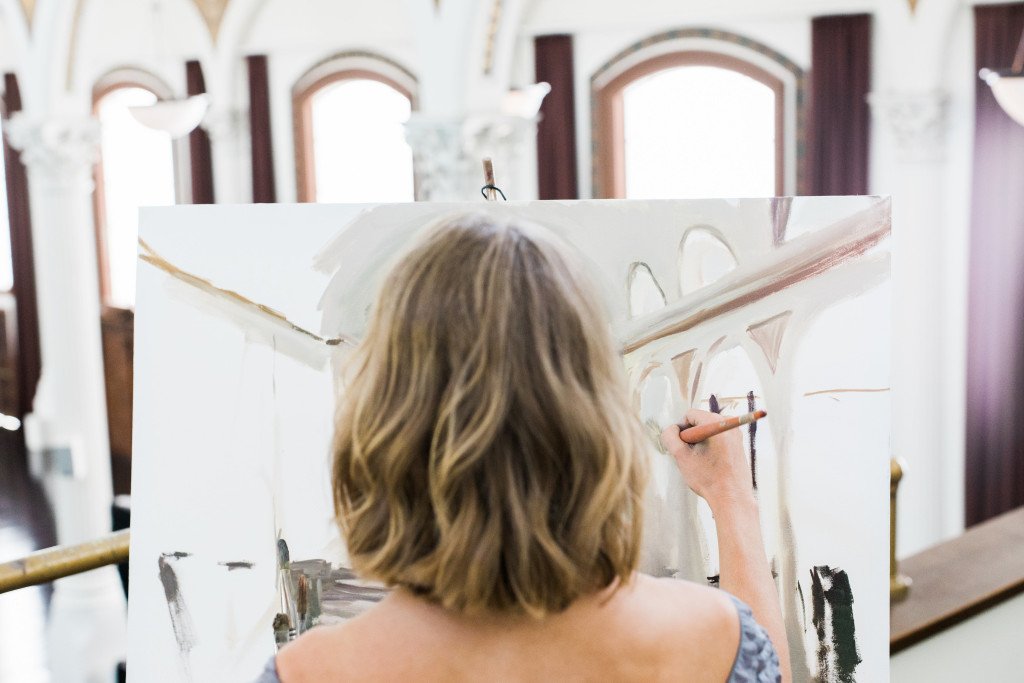
What is included in your pricing options?
I have a service that is completely live, 24″ by 36” canvas, where I go to the wedding and just paint as it happens. These paintings are more loose and impressionistic. I also can take these paintings back to the studio to refine the composition, add more people, and do the portraiture. As a more luxury item, I also offer 36″ by 48” oil on canvas paintings that are elaborately refined and life-like.
How soon do your clients receive their paintings?
Depending on the size of the canvas and the complexity of the composition, they can be done in as soon as one week or take as long as eight weeks to complete.
How do you prepare for a wedding?
I love to have a good chat with the bride and get a feeling for her personality and vision for her wedding. Even better is when I get to actually meet the couple before the wedding. Another option is to see photos of them on their wedding website. Sometimes people will send me pics of key people they want in the painting also. It just helps me feel more connected to them in the painting process.
On the day of the wedding, I arrive two to three hours early to scope out the best location for me to capture their wedding, where I also will not interrupt the flow of the event. I then start by painting the room without people, focusing on the venue, lighting, and décor.
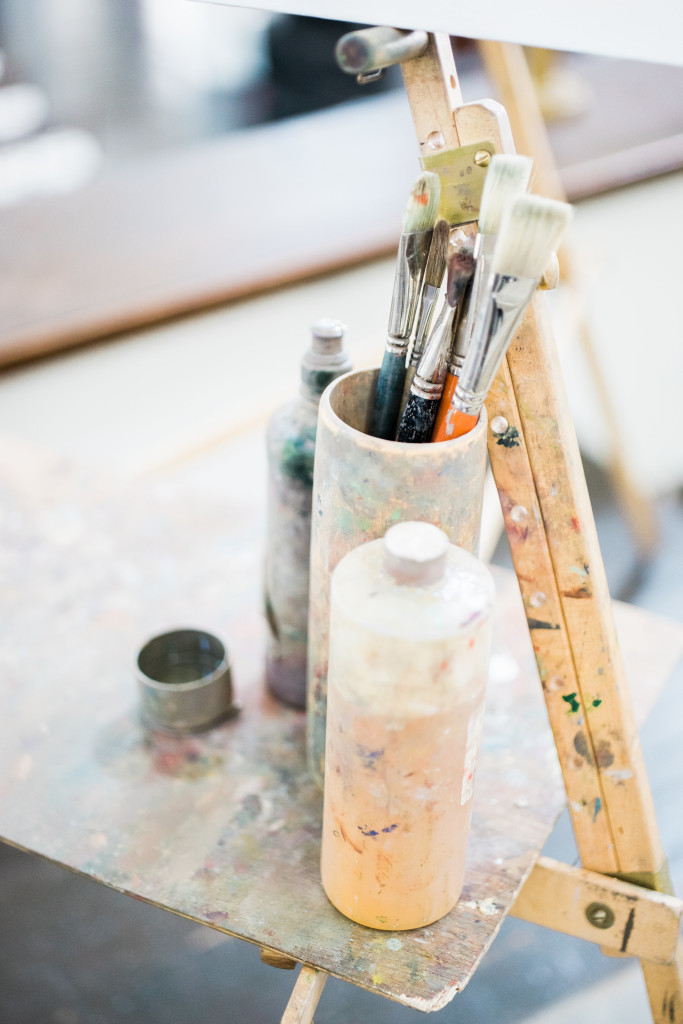
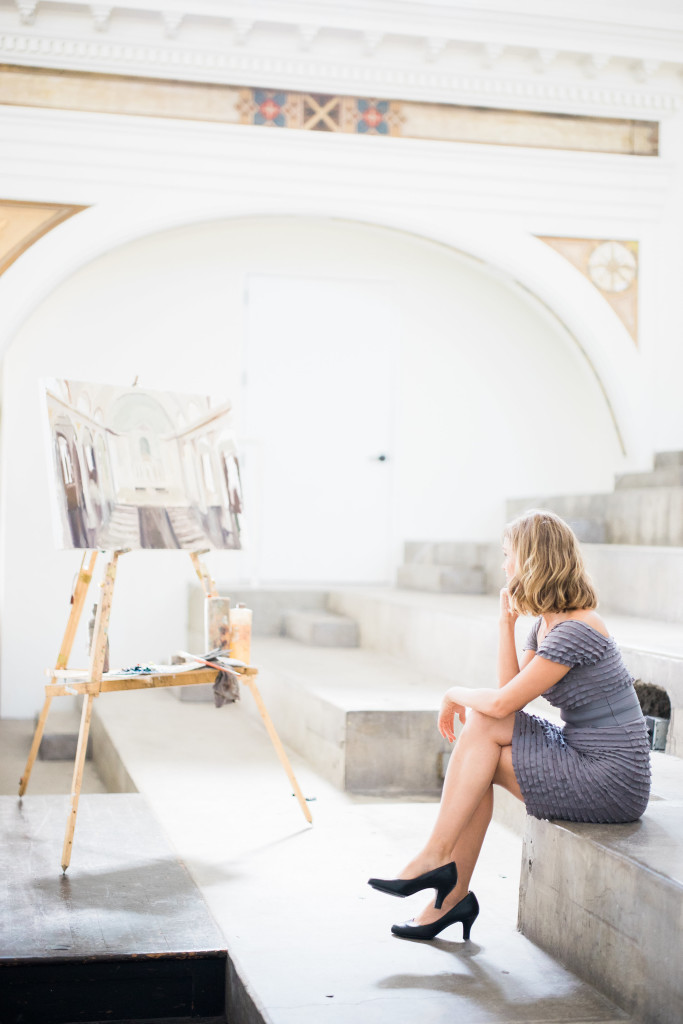
How do you go about capturing a single event during a wedding when, in reality, it happens for just a brief moment?
When I am at a wedding, I pay attention to what is happening and then try to collage all of those moments together into one scene. It’s more of time-lapse than an isolated moment. Actually, I’m not really interested in a cohesive scene. For example, the bride and groom dancing as everyone looks at them–that is more something the photographer can capture.
One of my favorite, if not THE favorite, thing I love about painting is composition. The inter-relationship between all parts and the whole. Painting a wedding as it happens allows me to put on my problem-solver hat and really play with the composition. The gestures of people, the different moments, some people dancing, some eating, some laughing. Sometimes I get stuck, and I have to re-arrange, but it’s a fun challenge and one I never tire of.
What is the best way to care for one of your paintings after the event has concluded?
The only recommendation I have is to try to keep the painting out of direct sun. Other than that, they are all archival, oil on canvas works that should last many lifetimes.

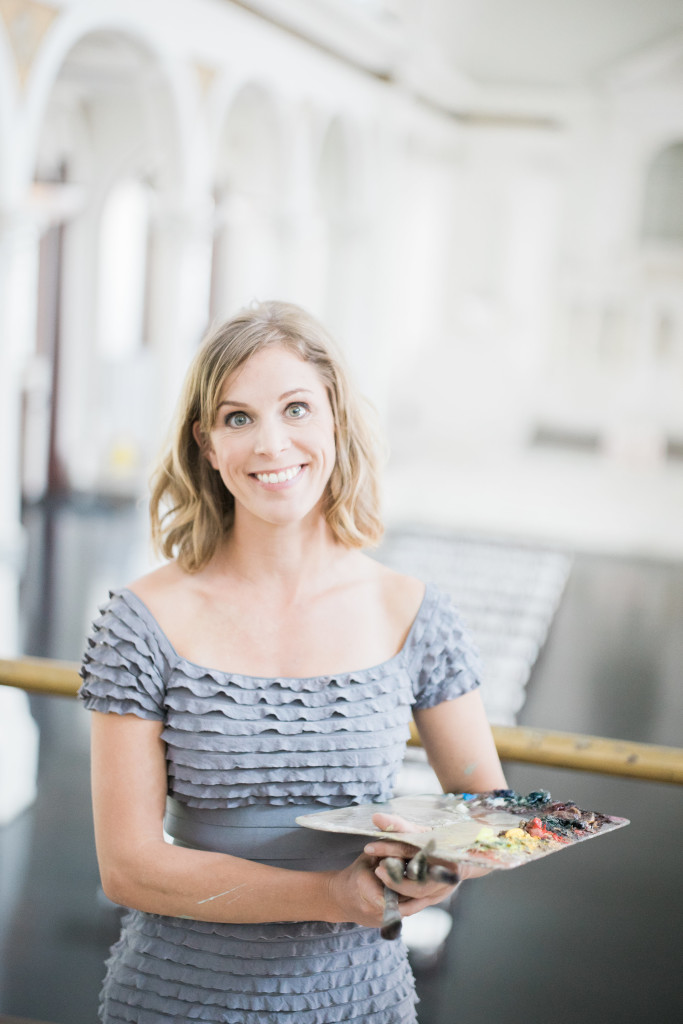
Do you offer similar services in different art mediums?
Funny you should ask… I have experimented with this in the past and always come back to oils, as it’s just my absolute favorite medium. The richness of the color and flow of the medium is impossible to get in other mediums. I recently did a wedding where I started the interior in acrylic and then went on top in oil and that really expedited the process so I may start to adopt that procedure… but for now it’s just oil on canvas.
Why have a painting done when a photographer and/or videographer is already booked to capture moments?
Photos and video are great for capturing quick moments and details, the things you might forget, the way your shoes looked, the exact flower content of the bouquets, all of the facial expressions you made during the ceremony.
The painting captures what you will never forget. My goal is that when you look at your painting, it takes you back to that day, that moment of time, in a visceral way. A painting in your home becomes like a living memory, one big dreamy panorama with the essence of that day’s feeling.
Also its just plain cool.
You also teach drawing at a local college—how do these two facets of your career intertwine?
I’ve been teaching painting and drawing in some capacity for over 10 years now. I love to geek out on perceptual and technical issues with students. As time becomes more and more limited, these two facets seem to conflict more than they intertwine, and I am thinking of transitioning into teaching out of my studio… but we will see!
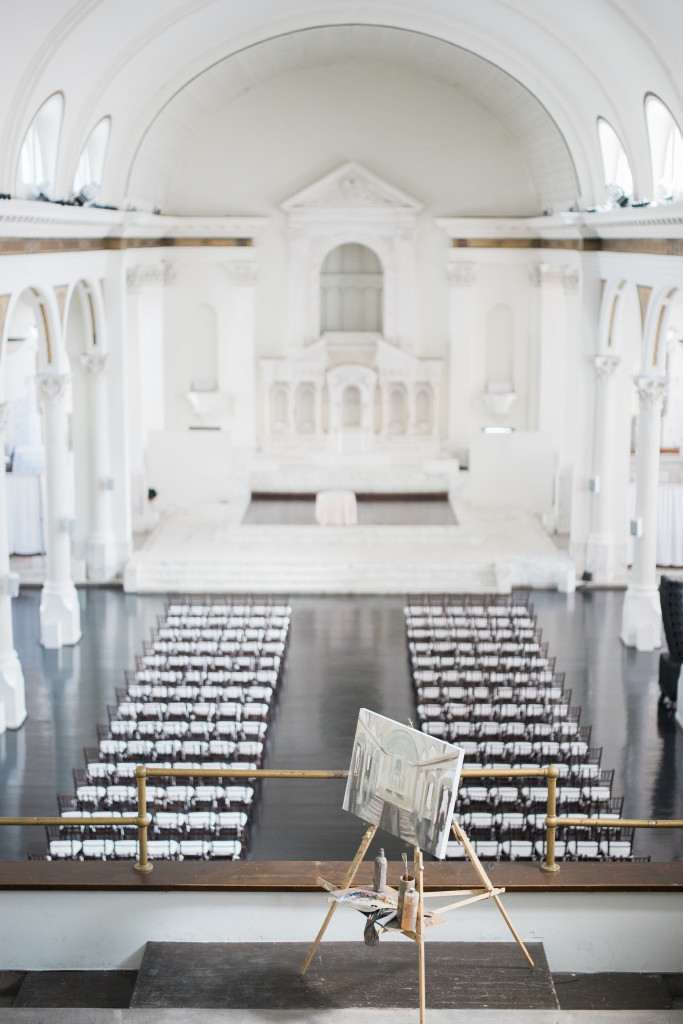
Photos | Brandon Aquino



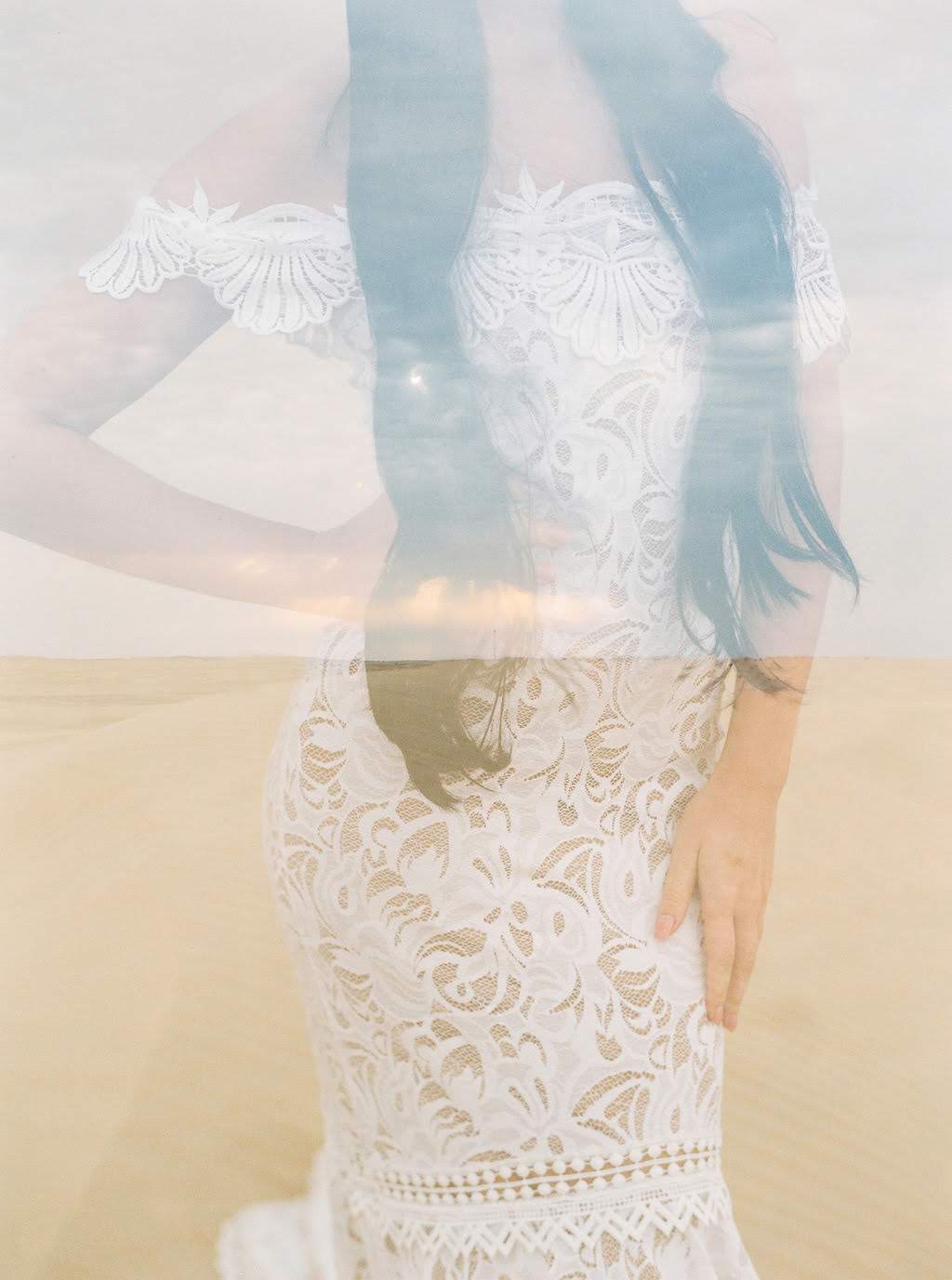
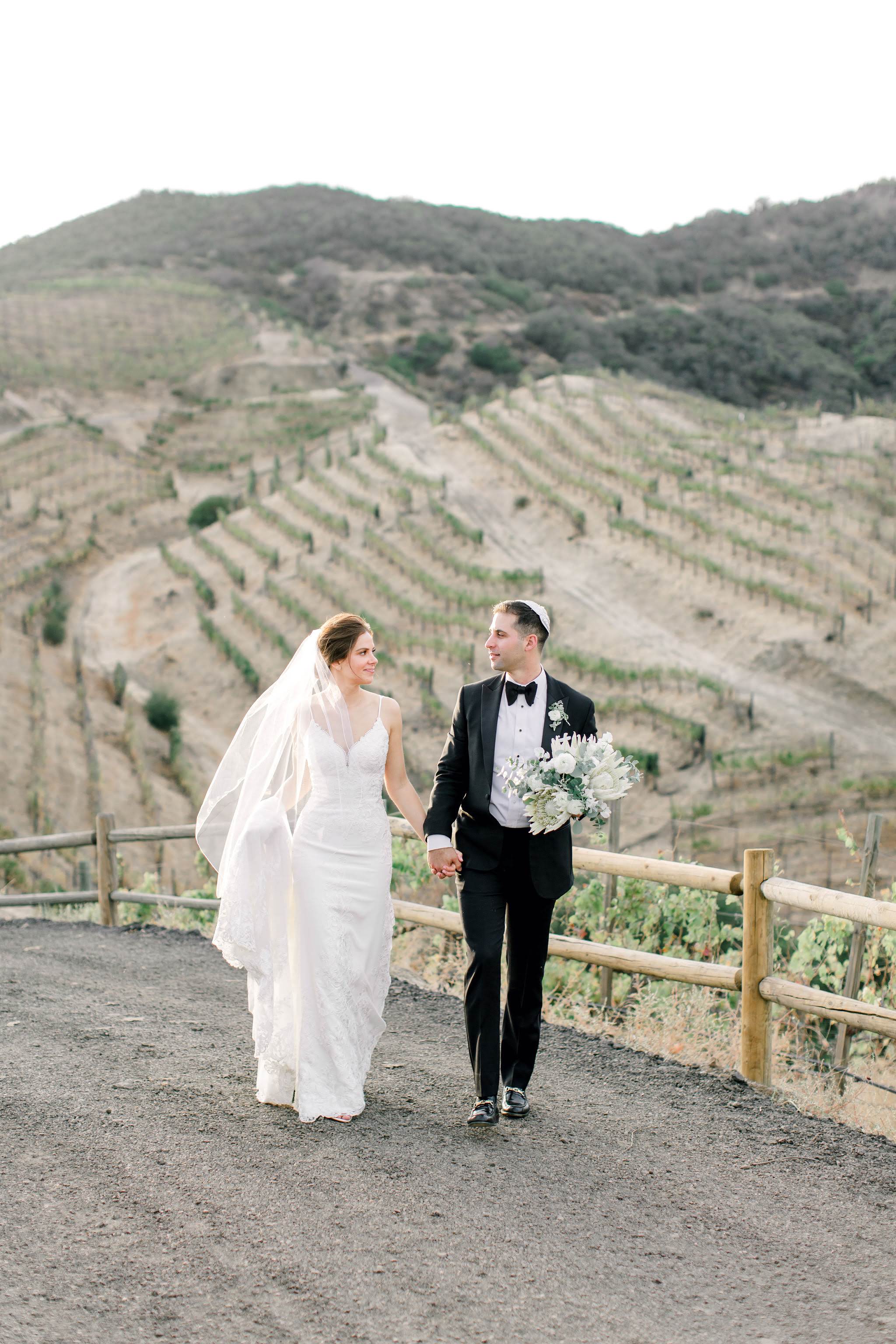
+ COMMENTS
add a comment